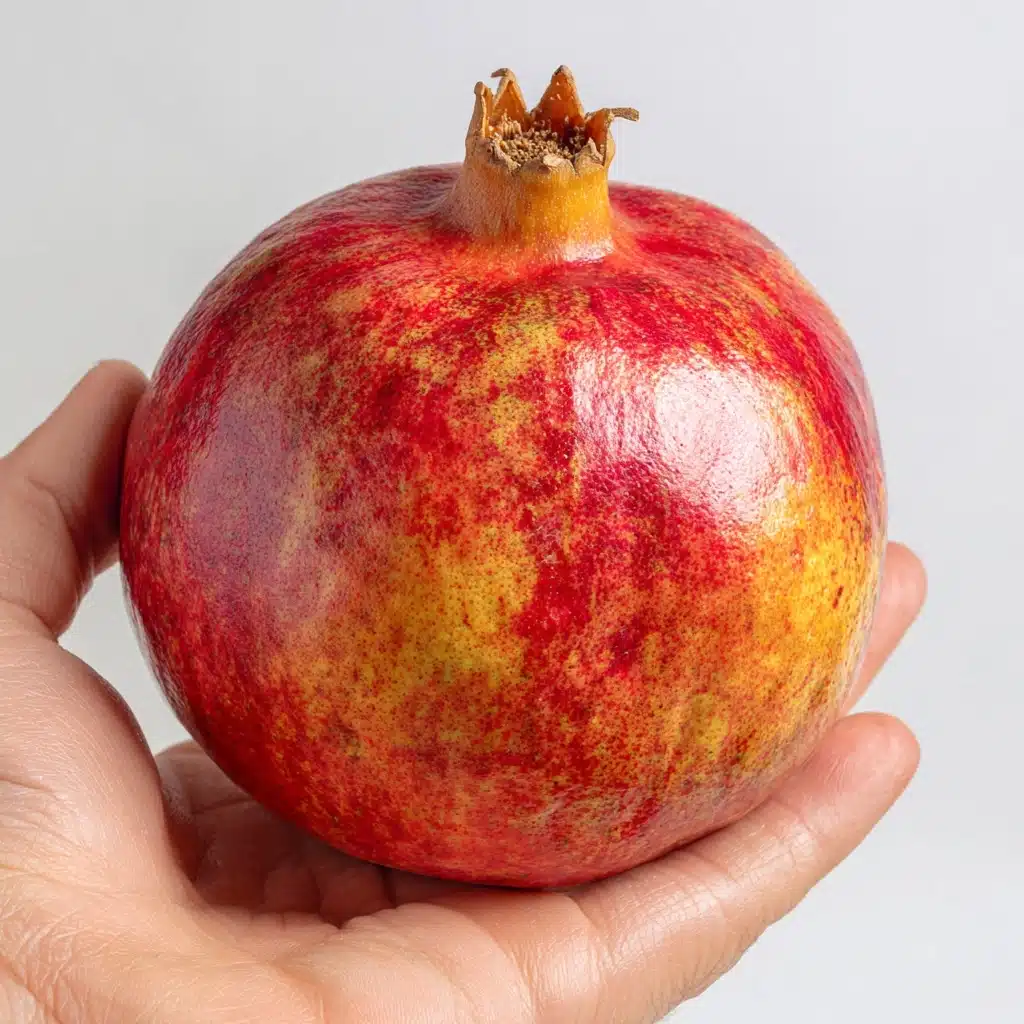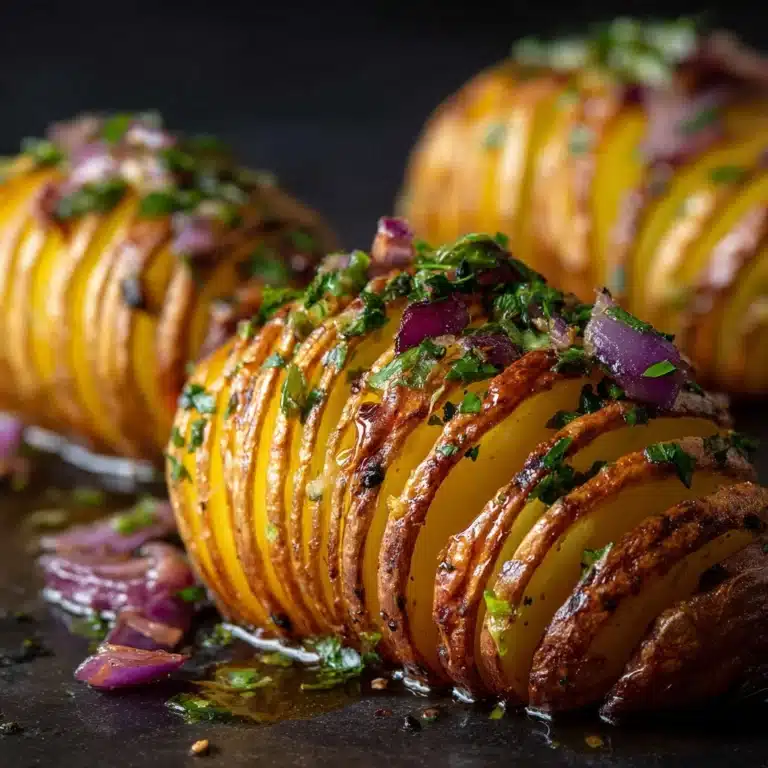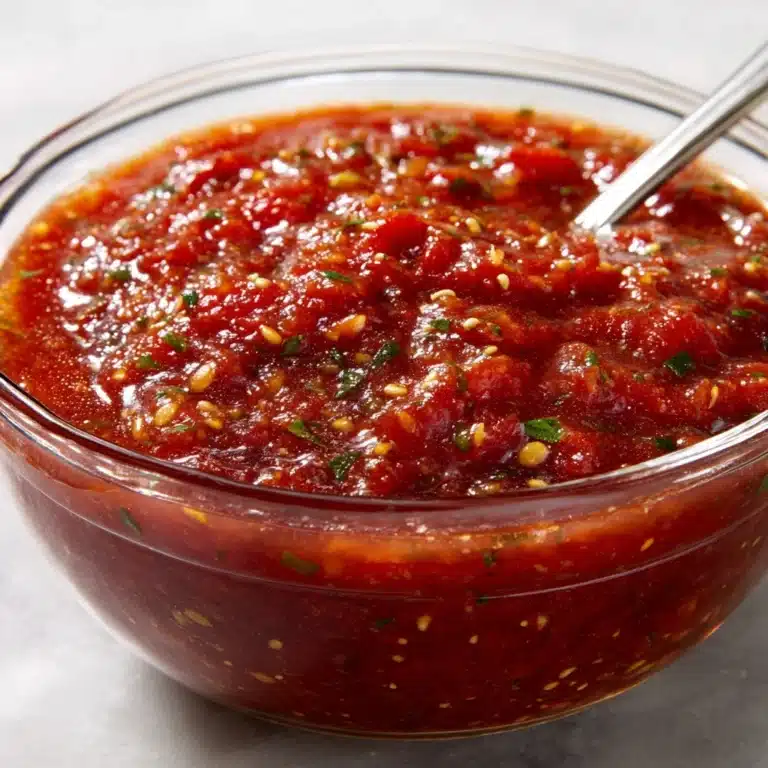Bright, juicy, and packed with a burst of flavor, pomegranate is one of nature’s most dazzling edible gems. Whether you snack on its ruby seeds by the handful, use them to jazz up a salad, or sprinkle them over your morning yogurt, there’s something utterly irresistible about cracking open a fresh pomegranate and unveiling those glistening arils. In this guide, I’ll walk you through the absolute best way to open and serve a pomegranate — say goodbye to stained countertops and lost seeds, and hello to a kitchen adventure that’s as fun as it is rewarding!
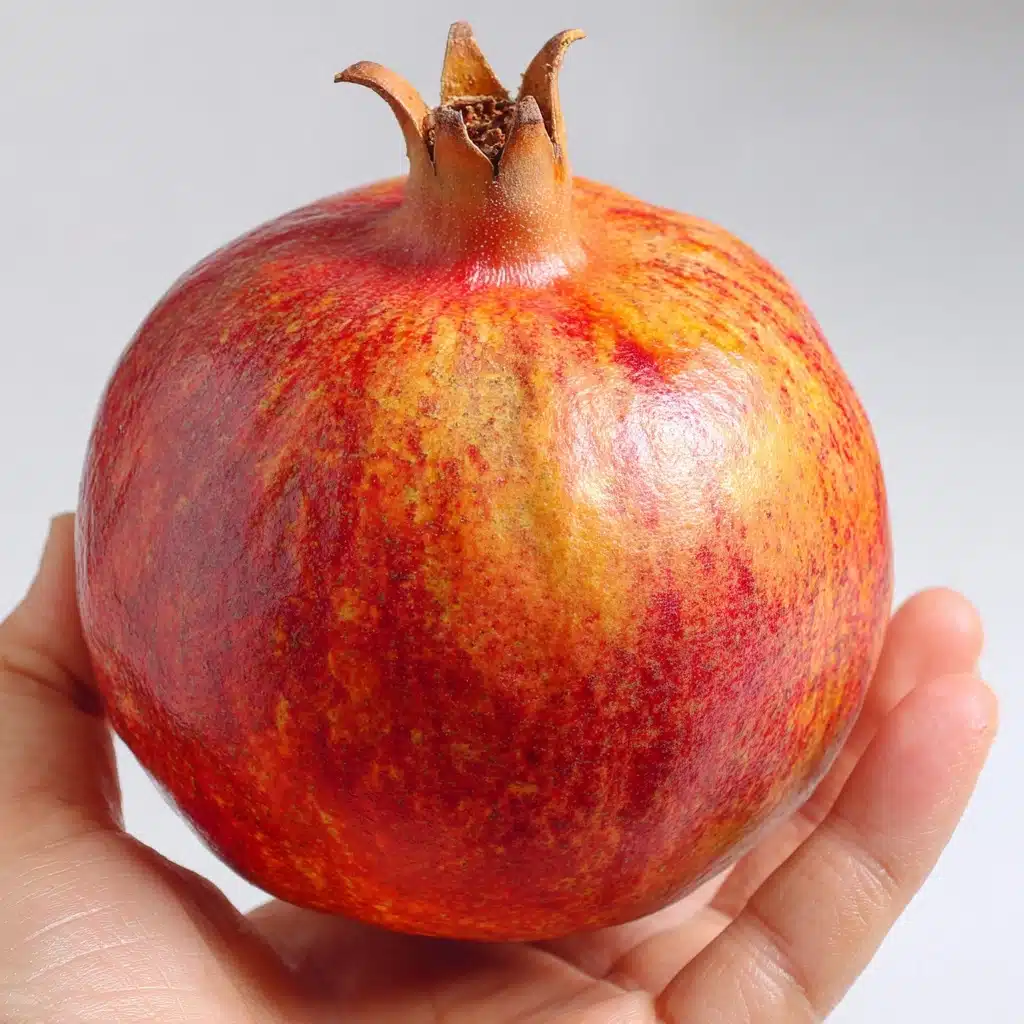
Ingredients You’ll Need
-
Pomegranate:
- 1 whole pomegranate
How to Make Pomegranate
Step 1: Cut Off the Crown
Place the whole pomegranate on a cutting board and, with a sharp knife, carefully slice off the crown (that cute, star-shaped tip). This makes it much easier to see the inner structure and start the opening process without sacrificing precious seeds.
Step 2: Score the Skin
Working from the top where you removed the crown, use your knife to score the skin from top to bottom in four gentle quarters. Don’t press too hard — the goal is to cut through the tough rind but not into the seeds themselves.
Step 3: Break into Sections
Gently hold the pomegranate in both hands and pull it apart into four sections along the score marks. You’ll feel the fruit naturally give way along the veins, revealing those stunning ruby clusters.
Step 4: Submerge and Separate Arils
Fill a large bowl with cool water and submerge your pomegranate sections. Use your fingers to loosen the arils under water; this keeps the juice from splattering and makes the process so much cleaner. The seeds will sink to the bottom, while the bitter white pith floats to the top.
Step 5: Skim Off Pith and Drain Seeds
Simply skim away the floating pith with your hands or a slotted spoon and discard it. Now, drain the bowl to separate seeds from water, then gently pat the pomegranate arils dry with a clean towel. You’re ready to snack, garnish, or create!
How to Serve Pomegranate
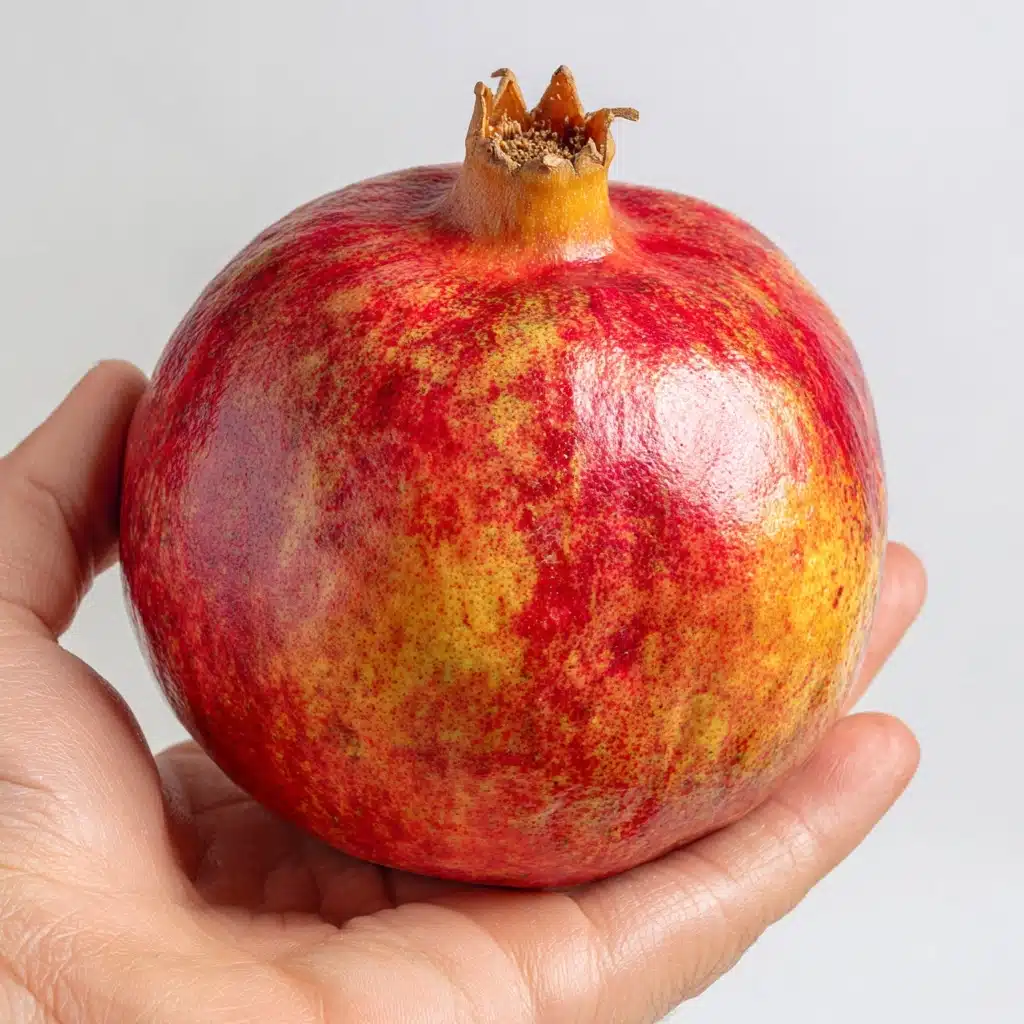
Pomegranate Garnishes
Few things instantly elevate a dish like a sprinkle of pomegranate arils! The vibrant red seeds are gorgeous atop green salads, grain bowls, or creamy hummus, where they bring color and a sweet-tart pop in every bite.
Side Dishes
Add a handful of fresh pomegranate to savory sides for a burst of freshness, or toss them into rice pilafs and couscous for a Mediterranean twist. They’re also fantastic stirred into roasted veggies or even on top of sweet potato mash.
Creative Ways to Present
Think outside the usual! Layer pomegranate arils with yogurt and granola for a jewel-toned breakfast parfait, use them as a playful topper on desserts like panna cotta, or even scatter them over avocado toast for crunch and tang. Their versatility makes them a secret weapon for creative plating.
Make Ahead and Storage
Storing Leftovers
Once you’ve removed the seeds, pop them into an airtight container and stash them in the fridge. They’ll stay fresh and lovely for up to five days — perfect for quick snacks or impromptu garnishing!
Freezing
Love to plan ahead? Spread the pomegranate arils on a lined baking sheet in a single layer and freeze them. Once solid, transfer them to a freezer bag; they’ll last for a few months, on hand whenever you need an antioxidant boost.
Reheating
Good news: pomegranate doesn’t need reheating! Just thaw frozen arils for a few minutes at room temperature or in the fridge before using in salads, baking, or as toppings.
FAQs
Can I open a pomegranate without making a mess?
Absolutely! By working underwater, you minimize juice splatters and easily separate the seeds from the pith. It’s hands-down the cleanest (and most fun) method I know.
What’s the best way to tell if a pomegranate is ripe?
Look for fruits that feel heavy for their size — that means they’re packed with juicy seeds. The skin should be deep red and free from major blemishes or cracks.
Are pomegranate seeds safe to eat whole?
Definitely! The crunchy seeds inside the arils are edible and full of fiber. They add a delightful texture to both sweet and savory dishes.
How long will cut pomegranate last in the fridge?
Once separated, pomegranate arils will keep in an airtight container in your fridge for up to five days, though they’re so tasty they rarely last that long in my house!
Is there a quick way to remove pomegranate seeds?
Submerging the fruit in water and gently rubbing the arils free is super efficient. Alternatively, some folks like to whack the back of a halved pomegranate with a wooden spoon, but the underwater method is much cleaner.
Final Thoughts
If you’ve never cracked open a pomegranate before, I promise you’ll find it surprisingly satisfying — and those gorgeous seeds are worth every moment. Dive in and discover all the ways a humble pomegranate can transform everyday dishes into something extraordinary!
Print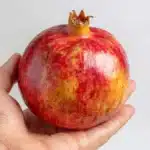
Pomegranate Recipe
- Total Time: 5 minutes
- Yield: 1 pomegranate (about 1 to 1½ cups arils) 1x
- Diet: Vegan
Description
Learn how to open a pomegranate and extract the juicy arils with ease. Enjoy these sweet and tangy seeds as a snack, topping, or garnish for various dishes.
Ingredients
Pomegranate:
- 1 whole pomegranate
Instructions
- Cut off the crown: Using a sharp knife, remove the crown of the pomegranate.
- Score the skin: Score the skin from top to bottom in quarters without cutting too deep into the seeds.
- Separate the sections: Gently pull the pomegranate apart into sections.
- Loosen the arils: Submerge the sections in water in a bowl and use your fingers to release the arils under water. Skim off the floating pith and drain the seeds.
- Enjoy: Pat dry the arils and use them as a snack, topping, or garnish.
Notes
- Pomegranate arils are versatile and can be used in salads, yogurt, oatmeal, or desserts.
- Store seeds in the refrigerator in an airtight container for up to 5 days or freeze for longer storage.
- Prep Time: 5 minutes
- Cook Time: 0 minutes
- Category: Snack, Topping
- Method: No-Cook
- Cuisine: Mediterranean
Nutrition
- Serving Size: 1/2 cup arils
- Calories: 70
- Sugar: 12g
- Sodium: 2mg
- Fat: 1g
- Saturated Fat: 0g
- Unsaturated Fat: 1g
- Trans Fat: 0g
- Carbohydrates: 16g
- Fiber: 3g
- Protein: 1g
- Cholesterol: 0mg
